The Prevalence and Risk Factors of Obesity among Medical Students at Shaqra University, Saudi Arabia
1Department of Medical Biochemistry, College of Medicine, Shaqra University, Shaqra 11961, Saudi Arabia
2Department of Anatomy, College of Medicine, Shaqra University, Shaqra 11961, Saudi Arabia
3Department of Internal Medicine, College of Medicine, Shaqra University, Shaqra 11961, Saudi Arabia
- *Corresponding Author:
- Noureldaim Elnoman Elbadawi
Department of Medical Biochemistry
College of Medicine
Shaqra University, Shaqra 11961
Saudi Arabia
Tel: +966543808051
E-mail: nourani@su.edu.sa
Citation: ZAhmad A, et al. The Prevalence and Risk Factors of Obesity among Medical Students at Shaqra University, Saudi Arabia. Ann Med Health Sci Res. 2020;10: 903-906.
This is an open access article distributed under the terms of the Creative Commons Attribution‑NonCommercial‑ShareAlike 3.0 License, which allows others to remix, tweak, and build upon the work non‑commercially, as long as the author is credited and the new creations are licensed under the identical terms.
Abstract
Background and objectives: Obesity is a health condition in which there is the gathering of the body fat, which arises due to imbalance of intake and expenditure. In recent years Obesity in Saudi Arabia has increased tremendously and it is one of the main causes of the coronary artery disease and diabetes. Our study aims to investigate the reasons behind the prevalence and risk factors of obesity among medical students at Shaqra University, Saudi Arabia. Methods: One hundred fourteen medical students at Shaqra college of medicine participated randomly in a cross sectional study after obtaining their verbal consent. A standard questionnaire included: demographic data, anthropometric parameters, life style patterns, etc has been designed and distributed to the respondents. The obtained data was analyzed using SPSS version 20. Results: The BMI data showed that 8.8% medical students were underweight, 46.5% normal, 25.4% overweight and 19.3% were obese. The results clearly showed that only 46.5% were normal and the rest had abnormal BMI values. Our study showed that, there was not much effect on obesity by consuming the fast food. On the other hand, there was a significant effect of performing regular exercise on obesity. Interpretation & conclusions: Our study findings could be comparable with that reported in Saudi Arabia regarding prevalence of obesity and overweight. We concluded that, regular exercise is a cornerstone in antagonizing obesity while no significant effect of both fast and normal food consumption on it in young medical students.
Keywords
Obesity; Diabetes; BMI; Age; Fast food; Exercise
Introduction
It is clear obesity is an ailment wherein there is the gathering of body fat, which emerges because of unevenness of intake and use. [1] In the past few years the prevalence of obesity or overweight is terrifically amplified worldwide, predominantly in advanced as well as in emerging countries. [2,3] According to reports in 2018 by the World Health Organization (WHO), obesity approximately increases 3 times since 1975. [4] The findings revealed that 39% were overweight at or above 18 years of age, and 13% obese. In addition, 41 million kids younger than 5 were obese or overweight and more than 340 million youngsters and youths (Age between 5-19) in 2016. [4] Of note, obesity in 2016 rose sharply from 4 per cent in 1975 to almost 18 per cent for kids and young people (aged 5–19). [4]
The overweight and obesity categorization by body mass index (BMI) is clarified beforehand. [5] We discern BMI is a wellknown and investigative apparatus for shaping the obesity and overweight. [6] The BMI is measured as the body weight (BMI = Mass/Height2), divided by the square of the body height and it is frequently written in Kg/m2. [7] As appeared in Table 1, the BMI under 18.5 is considered as underweight, ranges 18.5-24.9 as normal, among 25.0-29.9 overweight, among 30.0-34.9 Obesity I, between 35.0-39.9 obesity II and BMI which is equal to or greater than 40 is considered as extreme obese III.
| Classification | Obesity class | BMI (Kg/m2) |
|---|---|---|
| Underweight | - | 18.5 |
| Normal | - | 18.5 - 24.9 |
| Overweight | - | 25.0 - 29.9 |
| Obesity | I | 30.0 - 34.9 |
| Obesity | II | 35.0 - 39.9 |
| Extreme Obesity | III | = 40 |
Table 1: Classification of underweight, normal, overweight and obesity by BMI according to WHO, 1997.
The accrual data show that obesity is a severe and chronic medical condition, which increment the danger of numerous medical issues including metabolic disorder, hypertension, plaque formation, coronary illness, neurological disorder, elevated sugar in blood, elevated blood fats, malignant growths and sleep maladies. [8,9] Obesity results from multiple factors including energy imbalances, less physical activities, genetic syndromes and endocrine disorders, certain medicines, family history, lifestyle, or other environmental factors. [9,10] The obesity patterns are exaggerated by voluminous surplus factors also, for instance, racial or ethnic contrasts, age, and gender. [11] Obesity/overweight in Saudi Arabia, principally among women, has ominously increased in latest years and is among the leading triggers of cardiovascular disorder and diabetes. The research data demonstrated that obesity is the fundamental driver of numerous non-transferable diseases in Saudi Arabia. [12] The data exposed that the pervasiveness of obesity was 36.9%, which was more conjoint in male as paralleled to female and amazingly the pervasiveness of overweight in males was 42.4% in contrast to females which was 31.8%. [2] The overall obesity predominance was 35.5% and remarkably female was more obese as compared to male. [2] The survey convoyed in Jeddah, Saudi Arabia among females publicized 33.8% obesity. [13] Some others region of Saudi Arabia, for example, in Jizan, Riyadh, and Hail, 12%, 22% and 34% people were found obese respectively. [14] In some rural Areas of Saudi Arabia only four percent obesity was found. [14]
In this investigation, we have directed a survey by concocting a questionnaire and bashed to discern the popularity of the obesity among young medical students (Mean age 21.28). We calculated the BMI as reported previously and compared the BMI data and find out the percentage of underweight, normal, overweight, obesity I, obesity II, extreme obese III by using the software Statistical Package for Social Sciences (SPSS). The effect of taking the fast food and doing regular exercise on obesity parameter was determined by SPSS. As well, we dissected the medical antiquity of the students in concerns to diabetes and determined the level of student families experiencing diabetes.
Materials and Methods
A cross-sectional examination was directed among Shaqra college medicinal students, Saudi Arabia in a time of seven days in the academic year 1439 – 1440, Shaaban month. The samples comprising 114 male medical students were equally selected by systematic random technique from students list. BMI was considered as an adiposity indicator in this analysis. BMI is the weight factor quite prevalently used in connection to height. BMI is feasible and specific. Body weight was estimated to the closest 0.1 kg utilizing a standard balance scale manufactured by OHAUS New Jersey, United States. Subjects without shoes and wearing very light indoor clothes. At nearest 0.5 cm, body height was detected without shoes by a ruler fixed to the wall. BMI will be calculated through the division of body weight (kg) by the square of height (m). [15] According to WHO the BMI rummage-sale in the analysis is usually referred to as: Underweight<18.50, Normal 18.50-24.99, overweight ≥25 and obese ≥30 (9). SPSS (version 20) was employed for anatomizing of data. [15] Data were gathered using a pre-designed self-administered questionnaire including the following: Sociodemographic data such as including BMI, age, residence, faculty, family monthly income in Saudi Riyal, etc.
Results and Discussion
We have gathered the substantial data including stature, weight, age, family ancestry about diabetes, smoking propensity, regular exercise, and food habits about the medical students by setting up a questionnaire. By utilizing the weight and tallness data, we have determined the BMI by utilizing the recipe, BMI=weight/ Height2. The BMI data [Figure 1] showed that 8.8% medical students were underweight, 46.5% normal, 25.4% overweight and 19.3% were obese.
The outcomes plainly validated that solitary 46.5% ordinary were typical and remainder had irregular BMI, which is a disturbing sign for the coming ages in Saudi Arabia. As mentioned above the obesity is one of significant hazard factors for some non-transmittable maladies in Saudi Arabia. Recently, a cross-sectarian survey has taken place in the Faculty of Medicine, Northern Border University, Ar’ar, Saud Arabia (between 2015 and 2016) among medical students (aged 19-25 years), with finding that 10.6% were weightless, 58.3% were average, 21.7% were obese, and 9.4% were obese. [16] Another work was conducted by Al-Rukban M from September 2001 to January 2002. Overweight was 13.8 percent and obesity was 20.5 percent on 894 Saudi teenagers in Riyadh (11-20 year olds). [17] In addition, the information got by Ibrahim et al. by a cross-sectional investigation in Jeddah University during 2012-2013 delineated that 19.1% and 12.7% were overweight and obese respectively. [18] Another investigation completed among University students in Jeddah, Saudi Arabia by Baig et al. demonstrated 29.8% overweight, 10.7% moderately obese, and 7.9% seriously obese. [19] A study conducted in Dammam City, Saudi Arabia among male students found that overweight was 24.5%; obese were 11.9% and severely obese 10.7%. [20]
We also carried out the study to hear about the connection between fast food consumption and obesity. The data obtained from our study as shown in Figure 2 showed that there was not much effect on obesity by consuming the fast food. In our study, we found that in non-obese students 57% were taking normal food and 23.7% were taking fast food, while as in obese students 9.6% were taking normal and fast food respectively. It is very clear that from Figure 2 those 66.6% medical students were taking fast food and only 33.3% were taking normal food.
It could be possible that due to younger age of these medical students (Age between 17-26) [Figure 3] the effect of the fast food was not significant on obesity. We believe that it could be possible that taking fast food for a longer duration may lead to serious complications especially in older age (after 40 years).
It is well documented that regular exercise is an effective way to control weight in an individual. Therefore, we have included this factor in this study. Our study showed [Figure 4] that in non-obese people, 38.6% people were doing exercise and 42.1% students were not doing exercise. In case of obese people, 13.2% students were not doing exercise and 6.1% were performing daily regular exercise. Overall, 44.7% students were doing exercise and 55.3% were not doing regular exercise. It is clear from the data that there was a significant effect of performing regular exercise on obesity which is well correlated with earlier published data. [21-23]
We also studied to find the family history of students regarding to diabetes. As depicted in the Figure 5, 37.7% families are suffering from diabetes and 62.7 are non-diabetic which is an alarming signal accounted for a health issue in Saudi Arabia. We need extensive research in this area and need to explore the factors which are responsible for this. We recommend changing the life style, in term of performing regular exercise and avoiding fast food consumption to minimize the chances of developing obesity and diabetes.
Conclusion
We concluded that, regular exercise is a cornerstone in antagonizing obesity while no significant effect of both fast and normal food consumption on it in young medical students as our study findings could be comparable with that reported in Saudi Arabia regarding prevalence of obesity and overweight.
Acknowledgment
We thank the College of Medicine, Shaqra University, Saudi Arabia for providing the necessary facilities for the preparation of this manuscript. We are also very grateful to the medical students who participated in this survey.
Competing Interests
The authors declare that they have no competing interests.
References
- Lyznicki JM, Young DC, Riggs JA, Davis RM. Obesity: assessment and management in primary care. Am Fam Physician. 2001;63:2185.
- Al-Nozha MM, Al-Mazrou YY, Al-Maatouq MA, Arafah MR, Khalil MZ, Khan NB, et al. Obesity in Saudi Arabia. Saudi Med J. 2005;26:824-829.
- Di Angelantonio E, Bhupathiraju SN, Wormser D, Gao P, Kaptoge S, de Gonzalez AB, et al. Body-mass index and all-cause mortality: individual-participant-data meta-analysis of 239 prospective studies in four continents. Lancet. 2016;388:776-786.
- Obesity and overweight, World Heal. Organ. 2018.
- Mugharbel KM, Al-Mansouri MA. Prevalence of obesity among type 2 diabetic patients in Al-khobar primary health care centers. J Family Community Med. 2003;10:49.
- Smith PD, O’Halloran P, Hahn DL, Grasmick M, Radant L. Screening for obesity: clinical tools in evolution, a WREN study, WMJ Off. Publ. State Med. Soc. Wisconsin. 2010;109:274.
- Chung S. Body mass index and body composition scaling to height in children and adolescent, Ann Pediatr Endocrinol Metab. 2015;20:125.
- Obesity NHS. 2019.
- https://www.nhlbi.nih.gov/health-topics/overweight-and-obesity.
- Hruby A, Manson JE, Qi L, Malik VS, Rimm EB, Sun Q, et al. Determinants and consequences of obesity, Am J Public Health. 2016;106:1656-1662.
- SS MA. A review of prevalence of obesity in Saudi Arabia. J Obes Eat Disord. 2016;2:25.
- ALNohair S. Obesity in gulf countries, Int J Health Sci. (Qassim). 2014;8:79.
- Alharbi MM, Jackson RT. Physical activity and the prevalence of general and abdominal obesity among Saudi women of reproductive age in Jeddah City. J Obes Overweight. 2017;3:104.
- Al-Ghamdi S, Shubair MM, Aldiab A, Al-Zahrani JM, Aldossari KK, Househ M, et al. Prevalence of overweight and obesity based on the body mass index; a cross-sectional study in Alkharj, Saudi Arabia. Lipids Health Dis. 2018;17:134.
- W.H. Organization, Definition, diagnosis and classification of diabetes mellitus and its complications: report of a WHO consultation. Part 1, Diagnosis and classification of diabetes mellitus, Geneva: World health organization, 1999.
- Mehmood Y, Al-Swailmi FK, Al-Enazi SA. Frequency of obesity and comorbidities in medical students. Pakistan J. Med. Sci. 2016;32:1528.
- Al-Rukban MO. Obesity among Saudi male adolescents in Riyadh, Saudi Arabia. Saudi Med J. 2003;24:27-33.
- Ibrahim NK, Mahnashi M, Al-Dhaheri A, Al-Zahrani B, Al-Wadie E, Aljabri M, et al. Risk factors of coronary heart disease among medical students in King Abdulaziz University, Jeddah, Saudi Arabia. BMC Public Health. 2014;14:411.
- Baig M, Gazzaz ZJ, Gari MA, Al-Attallah HG, Al-Jedaani KS, Mesawa AT, et al. Prevalence of obesity and hypertension among University students’ and their knowledge and attitude towards risk factors of Cardiovascular Disease (CVD) in Jeddah, Saudi Arabia. Pakistan J Med Sci. 2015;31:816.
- Sabra AA, Taha AZ, Al-Sebiany AM, Al-Kurashi NY, Al-Zubier AG. Coronary heart disease risk factors: prevalence and behavior among male university students in Dammam City, Saudi Arabia J Egypt Public Health Assoc. 2007;82:21-42.
- Al-Hazzaa HM, Abahussain NA, Al-Sobayel HI, Qahwaji DM, Musaiger AO. Lifestyle factors associated with overweight and obesity among Saudi adolescents. BMC Public Health. 2012;12:354.
- Croezen S, Visscher TL, Ter Bogt NC, Veling ML, Haveman-Nies A. Skipping breakfast, alcohol consumption and physical inactivity as risk factors for overweight and obesity in adolescents: results of the E-MOVO project. Eur J Clin Nutr. 2009;63:405-412.
- Dupuy M, Godeau E, Vignes C, Ahluwalia N. Socio-demographic and lifestyle factors associated with overweight in a representative sample of 11-15 year olds in France: results from the WHO-Collaborative Health Behaviour in School-aged Children (HBSC) cross-sectional study. BMC Public Health. 2011;11:442.

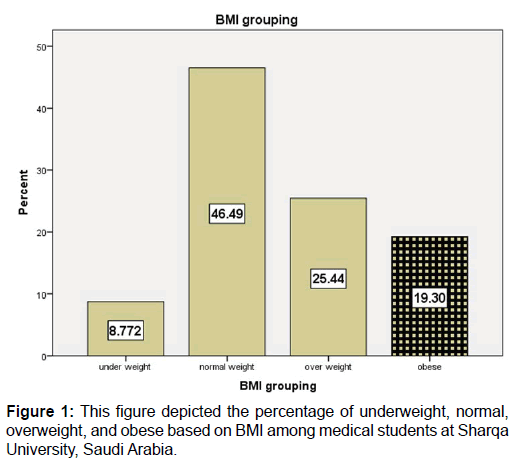
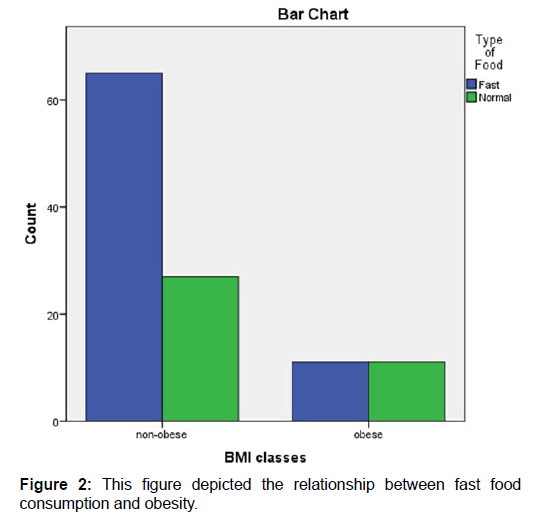
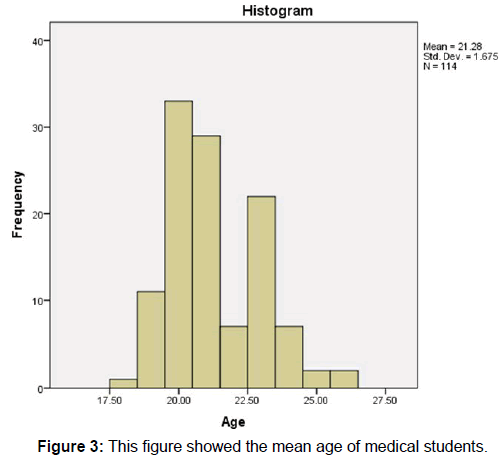
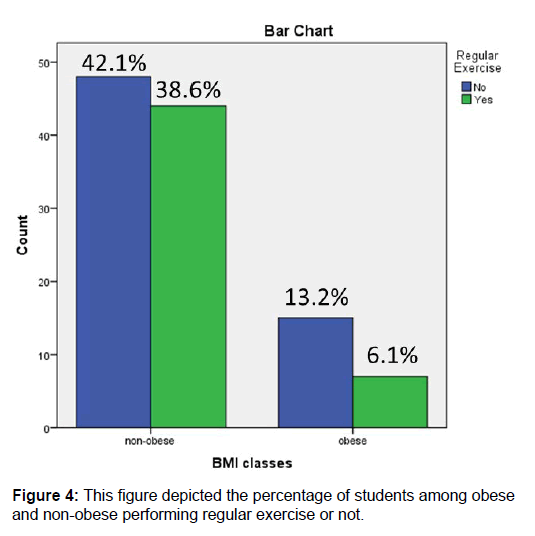
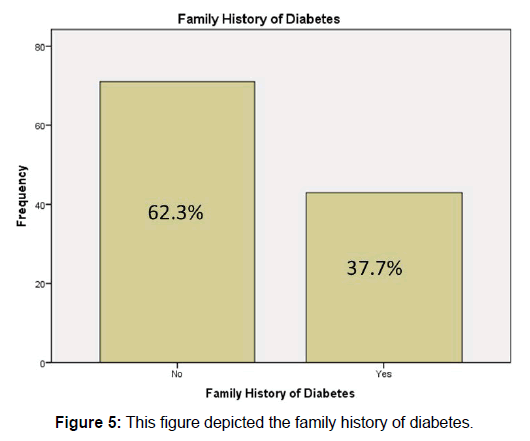



 The Annals of Medical and Health Sciences Research is a monthly multidisciplinary medical journal.
The Annals of Medical and Health Sciences Research is a monthly multidisciplinary medical journal.